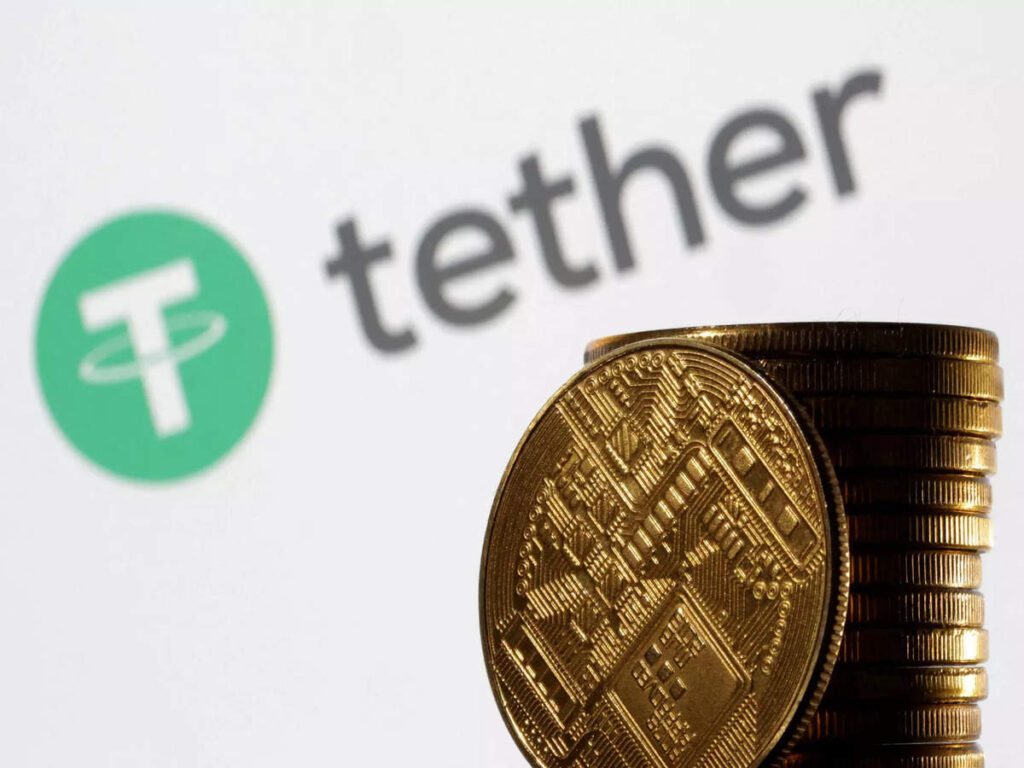
The rapid expansion of the stablecoin market has captured the attention of the cryptocurrency world, with advocates touting these digital assets as a revolutionary force in the $150 trillion global payments industry. However, a recent study, co-developed by Visa, revealed a startling fact – more than 90% of stablecoin transaction volume is not the work of real users, but of bots and large-scale traders. This vision challenges the prevailing view that stablecoins can disrupt traditional financial systems, leading to a re-evaluation of stablecoin use cases and their true impact on payments and digital assets.
Stablecoin Ecosystem: Defining the Market Size and Key Players
The stablecoin market has seen significant growth, with projections suggesting that the total value of all stablecoins could rise to an impressive $2.8 trillion by 2028. This represents a significant jump from its current trading, which is dominated by leading stablecoin Tether (USDT). and USD Coin (USDC). ), which together account for 97% of the market share. This growth underscores the growing importance of stablecoin trading volume and their role as pivotal digital assets in the crypto asset landscape.
Uncovering the Automated Landscape: Visa's Findings on Stablecoin Transactions
A study by Visa and Allium Labs aimed to distinguish between transactions initiated by bots and those conducted by real users, revealing that only 6.8% of the $2.2 trillion stablecoin transactions in April 2024 were real membership payments. This revelation casts doubt on the assumption that stablecoins are set to revolutionize the payments industry, highlighting the prevalence of automated transactions compared to real stablecoin use cases.
advertisement
Dive deeper: Challenges of accurately tracking stablecoin transactions
Determining the actual value of cryptocurrency activity has always been complex, with Glassnode estimating that the market's peak $3 trillion in cryptocurrency trading during the 2021 bull market was closer to $875 billion. This issue is particularly evident with stablecoins, where the risk of double transactions can inflate the volume of stablecoin transactions, complicating the true valuation of these digital and crypto assets.
Potential impact on adoption and regulation of stablecoins
The discovery that the vast majority of stablecoin transactions originate from inauthentic users has profound implications for the future of these digital assets. It casts doubt on their level of adoption and use, potentially challenging the idea that stablecoins can disrupt traditional payment systems. Furthermore, this vision may shape stablecoin regulation, leading to more careful scrutiny by policymakers to enhance stablecoin security and ensure market transparency.
The role of financial technology giants in the field of stable currencies

Major fintech players, including PayPal and Stripe, have ventured into the stablecoin market, recognizing their potential to simplify payments. PayPal introduced its stablecoin, PYUSD, in 2023, with the aim of facilitating instant and cost-effective transactions within its payment infrastructure. Likewise, Stripe's April 2024 announcement of accepting stablecoins for online transactions underscores the increasing integration of these digital assets into mainstream payment solutions.
Overcoming barriers to stablecoin adoption
Despite the push from prominent fintech companies, uptake of stablecoin-based payment solutions has been tepid. Industry experts, such as Pranav Sood of Airwallex, point to the ease of use of the technology as a major hurdle. This sentiment is reflected in the continued reliance on checks for a large portion of payments in the United States, illustrating the challenges in adopting new payment technologies and leveraging stablecoin use cases effectively.
Implications for stablecoin issuers and regulators
The realization that real users do not drive the majority of stablecoin transactions has important consequences for both issuers of these digital assets and the regulators that oversee the cryptocurrency market. This indicates a need for stablecoin issuers to improve their strategies, focusing on improving utility and user experience to promote true adoption. Regulatory bodies may also intensify their efforts to ensure market transparency, mitigate risks, and protect individual and institutional investors in digital and crypto assets.
Possibility of organizational calculation
The growing gap between the perceived and actual use of stablecoins could lead to regulatory reform, with authorities examining the industry more closely. This scrutiny could lead to stricter reporting requirements, increased transparency, and possibly new regulations governing the issuance and use of stablecoins, which could reshape the stablecoin market and impact the broader cryptocurrency ecosystem.
Stablecoins and the broader cryptocurrency landscape
The findings regarding the dominance of unused automated activity in the stablecoin market raise broader concerns about the health of the cryptocurrency industry. If a significant portion of stablecoin transaction volume is artificial, this could point to similar issues across other crypto market sectors, calling into question the overall credibility and adoption of digital and crypto assets.
The way forward: enhancing transparency and encouraging real adoption
To meet the challenges highlighted visa According to the study, the stablecoin industry and stakeholders will need to focus on enhancing transparency, improving ease of use, and promoting true adoption through organic payments. This may include developing robust reporting mechanisms for stablecoin security, implementing clear guidelines and standards, and prioritizing real benefit over speculative trading in the stablecoin market. By taking these steps, the stablecoin ecosystem can work to regain the trust of regulators, investors, and the broader public, strengthening its position among digital assets.
The role of Blockchain analytics in revealing stablecoin dynamics
The Visa study's reliance on advanced blockchain analytics to separate real stablecoin transactions from automated activity underscores the importance of data-driven insights in understanding the true nature of the cryptocurrency market. As the industry continues to evolve, the application of cutting-edge analytical tools will be crucial in providing a more precise and accurate understanding of the use and adoption of stablecoins, blockchain transactions, and shaping the future of digital assets and stablecoin transaction volume.
Conclusion: Overcoming the stablecoin dilemma
The findings revealed in the Visa study provide a sobering reality check on the stablecoin market, challenging the prevailing narrative around these digital assets as the key to revolutionizing the global payments industry through organic payments. By recognizing the dominance of unused automated activity, industry stakeholders and regulators can work to address the underlying issues and promote true adoption of stablecoins, with a focus on practical use cases for stablecoins. As the cryptocurrency ecosystem continues to mature, the ability to separate the signal from the noise will be critical in charting a path forward that aligns with the real needs and behaviors of users.
Instructions
1) What is the current state of the stablecoin market?
The stablecoin market is expanding rapidly, with projections indicating that it could reach a total value of $2.8 trillion by 2028. Leading stablecoins Tether (USDT) and USDCoin (USDC) currently dominate the market.
2) What did Visa's study reveal about stablecoin transactions?
Visa's study revealed that more than 90% of stablecoin transaction volume comes not from real users, but from bots and large-scale traders. This finding challenges the view that stablecoins can disrupt traditional financial systems.
3) What are the implications of the Visa study results for the adoption and regulation of stablecoins?
The findings cast doubt on the level of adoption and use of stablecoins and may shape future regulations. Policymakers may increase scrutiny to enhance the security of stablecoins and ensure market transparency.
4) What role do fintech giants play in the stablecoin space?
Big fintech players like PayPal and Stripe have ventured into the stablecoin market, recognizing their potential to simplify payments. They introduced their stablecoins and started accepting them for online transactions.
Disclaimer: This article is for informational purposes only and should not be considered financial or investment advice. Cryptocurrency investments are subject to market risks, and readers should conduct their own research and consult with professionals before making any investment decisions. Chain News Network is not responsible for any market losses.
advertisement
The post More Than 90% Stablecoin Transactions Aren’t From Real Users, Reports VISA first appeared on Investorempires.com.
